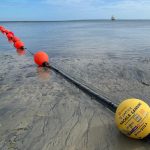Matt Warman MP Attacks ISPs for Advertising Misleading Broadband Speeds
The Conservative MP for Boston and Skegness, Matt Warman, has accused ISPs of being “complicit in fraud” for the way they advertise broadband speeds in the United Kingdom and has called a Westminster Hall event to debate the issue at 4.30pm tomorrow. He also wants “fibre” to only mean FTTP/H ISPs.
At present the Advertising Standards Authority only requires ISPs to promote a headline speed that is achievable by at least 10% of their customers (i.e. the fastest 10%), which must also be preceded by an “up to” qualifier and a “prominent disclaimer” of any aspects that could impact the service’s performance.
However the situation began to change last year after various politicians and local authorities called upon the ASA to change their approach (here, here, here and here), which is despite the watchdog initially noting that complaints about broadband speed had fallen away significantly over the past few years.
Advertisement
Ed Vaizey MP said (March 2016):
“I hope that the Advertising Standards Authority will crack down on how providers advertise their speeds. At the moment, if only 10% of customers are receiving the advertised speed, in the eyes of the ASA that is supposed to be okay.
I totally accept that the ASA does a good job – it is a great example of self-regulation – but it really needs to go further on that. In my humble opinion, at least 75% of people should be getting the speeds that the broadband providers are advertising.”
Soon after that the ASA agreed to probe the issue and in November 2016 they set out a series of potential solutions (details), such as forcing providers to advertise “average speeds” or a “typical range” of speeds. At the time the ASA said they’d consult with the Committee of Advertising Practice (CAP) and report back during Spring 2017 with a draft proposal.
Since then Sky Broadband has become the first ISP to begin promoting “average speeds” alongside their broadband packages (here), although they also continue to advertise the more traditional “up to” speeds until such time as the ASA reaches a decision. However some politicians now appear to be losing their patience.
Matt Warman MP said (here):
“Consumers have come to expect that ‘Up to 8Mbps’ often means rather less – but the fact is that regulations say that just 10 per cent of users have to be able to receive that speed for the advertising to be acceptable. It’s like walking into a supermarket and choosing the best apple only to have it exchanged at the checkout for the most shrivelled. Broadband providers are complicit in this fraud on 90 per cent of consumers, but it’s the Advertising Standards Authority that needs to get a grip on it.
The good news is that that is just what is in the pipeline, but the bad news is that it’s not obvious what improvements can be made.”
Warman believes that an ISP’s advertised broadband product speeds must be available to the “majority of people who sign up for it” and he suggests that two thirds of consumers should be within 20% of the headline speed.
On top of that he also wants to ensure that “fibre broadband” style promotions are only used by true fibre optic ISPs (FTTH/P), rather than hybrid-fibre solutions that mix in quite a bit of copper cable (FTTC / VDSL2, HFC DOCSIS etc.). France already has a similar rule (here) and we discussed this topic quite a lot in our earlier article – Will the Real Fibre Optic Broadband Service Please Stand Up.
Advertisement
Kerris Bright, Chief Marketing Officer at Virgin Media, told ISPreview.co.uk:
“Outdated rules allowing broadband providers to advertise a speed only available to 10 per cent of customers need to change. The advertised speed should be available to the majority of consumers – plain and simple.
Government has been clear about the need for a majority rule and today MPs are examining the issue in Parliament – the regulator should act now.”
Whatever the ASA proposes, it will probably end up being divisive, with their own research showing that there was no single solution where everybody was in 100% agreement. It’s also worth remembering that service speeds can fluctuate due to all sorts of reasons, such as traffic management policies, long copper lines, peak time network congestion and sometimes even issues like slow WiFi or poor home wiring, many of which represent aspects that ISPs cannot always control.
On top of that MPs often seem to forget that nearly all fixed line broadband ISPs are required to provide each customer with a personalised estimate of their expected broadband speed before completing the order process. This goes well beyond the 10% rule and is one of the key reasons why complaints about advertised speeds have fallen.
Meanwhile Sky’s recent decision to reject orders from those on sub-2Mbps lines is perhaps an example of an unintended consequence (here). Providers that refuse those with slower lines would effectively be able to make their advertised speeds seem more attractive, although this penalises many of those in rural areas and reduces choice.
Hopefully tomorrow’s debate will also touch on other areas, such as the need to promote upload speeds. Sadly upload performance is often hidden in the small print or not even mentioned at all, which is despite it becoming increasingly important to social media and other online services.
Advertisement
However we don’t think it’s right to accuse ISPs of being “complicit in fraud,” more often than not they’re simply reflecting the complex reality of technologies that naturally deliver very variable broadband performance. The copper lines that many people still use today were never intended to do what we’re asking of them now.
NOTE: Whilst accusing ISPs of “fraud,” the MP might do well to consider that for several years the Government’s Broadband Delivery UK ministers and culture secretary were wondering around the country with a big “80Mbps” and “up to 80Mbps” sign (pictured, top) in order to promote their roll-out. This is of course the maximum speed of Openreach’s FTTC (VDSL2) product, which suffers the same problems with performance. Sometimes they also added the “fibre broadband” tag line underneath. Pot calling the kettle black.
Mark is a professional technology writer, IT consultant and computer engineer from Dorset (England), he also founded ISPreview in 1999 and enjoys analysing the latest telecoms and broadband developments. Find me on X (Twitter), Mastodon, Facebook, BlueSky, Threads.net and Linkedin.
« UK Fixed Superfast Broadband Coverage Improves to 92.5% (Q1 2017)
















































Comments are closed